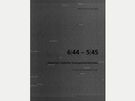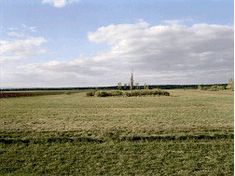Maria Theresia Litschauer
Maria Theresia Litschauer was born in Waldenstein, Austria in 1950 and studied philosophy, psychology, and art history at the University of Vienna. Her work has been shown in numerous solo and group exhibitions and is represented in international collections, including the Museum of Modern Art San Francisco or the Museum of Applied Arts in Vienna. In 2005 she received the Preis für bildende Kunst der Stadt Wien (Fine Arts Prize from the City of Vienna). The artist lives in Vienna.
In her work, Litschauer examines sites for their qualities and questions what it is that even constitutes a site. She tracks down the phenomena of non-sites and is concerned with the order that dominates among sites, for example, in terms of division, and the intersection of private and public. The city plays a central role in this. Litschauer examines the relationship between the hidden, urban structure and personal, individual possibilities for design. In Urban grid, personal city (1998/99), for example—an installation composed of a flexible module system, on the one hand, of photographs of the anonymous glass façades of New York, and on the other hand, of portraits of befriended artists living there—she confronts the consolidated space of architecture with a city that appears to be steadily transformable by the coordinates of social networks. In her photos of “non-sites,” Litschauer is interested in desolate places, such as underpasses, stairwells, and hallways, which she has photographed in various cities, including Vienna and Berlin. The the title goes back to American artist Robert Smithson. Whereas Smithson referred with his non-sites to the absent outside space in the interiors of museums, Litschauer’s “non-sites” are places of subordination under heteronomous spatial arrangements, which only accommodate a precarious stay. The absence of site here seems to be in terms of its quality as a location of personal actions.
read more read lessBooks of artists
Maria Theresia Litschauer. 6/44 -5/45 Ungarisch-Jüdische ZwansarbeiterInnen. Text by Litschauer, Maria Theresia. Vienna: Schlebrügge.Editor, 2006.

